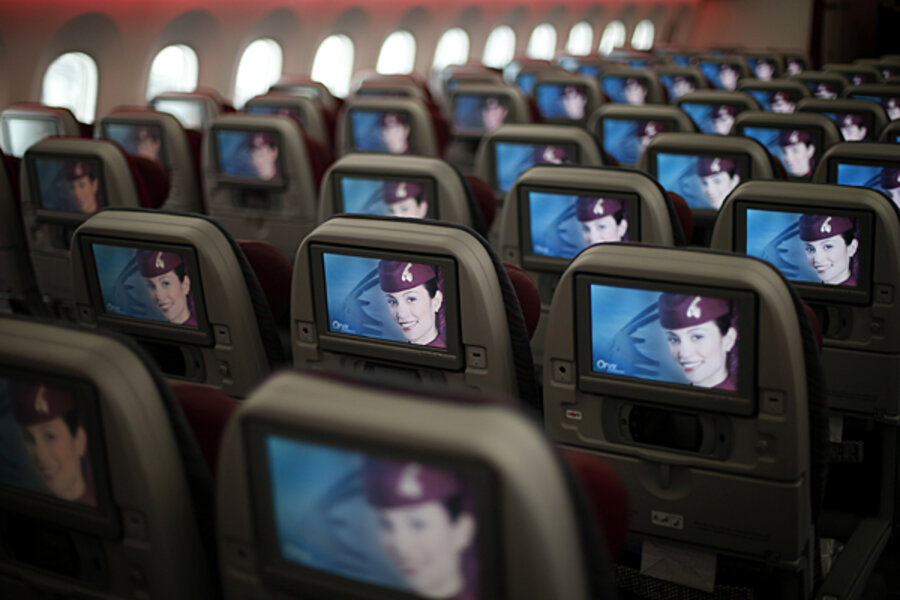First-class ticket: more legroom, more emissions
Loading...
Finally, there's a reason to feel good about sitting in coach.
Packed elbow to elbow with fellow passengers, knees pressed against the seat in front of you, you occupy less space. That translates to more passengers per plane and thus fewer carbon emissions per passenger, according to a study published last month by the World Bank. The economy in "economy class" is as environmental as it is financial.
First-class fliers, by contrast, have a carbon footprint that's as much as seven times larger than the average passenger's, according to the World Bank's study. Not only do first-class passengers take up more space, those first-class seats are also more likely to remain unfilled than economy seats.
The study comes as airliners push the envelop of luxurious accommodations, while simultaneously aiming to 'green' their operations. Those goals appear paradoxical. Can travelers enjoy the comforts of modern air travel without the guilt of the contrails they leave behind?
One might argue that weight is the most important factor, so all those extra passengers and their luggage crammed in economy make a plane less fuel-efficient.
"The problem with this argument is that the 'footprint' of a passenger on a commercial flight depends more on the space taken up by the passenger in the aircraft, and less on how much the passenger (and her or his luggage) weighs," Jon Strand, a senior economist at World Bank, wrote on the organization's blog.
Passenger weight makes up only 15 to 20 percent of an aircraft's weight, the World Bank found. The more passengers you fit on a plane the lower their personal footprint will be. First-class fliers, meanwhile, take up as much as six times more space than economy fliers, according to the study.
Global air travel produced 689 million metric tons of carbon dioxide in 2012, according to the Air Transport Action Group (ATAG), an industry association. That's 2 percent of the world's total emissions and 12 percent of total transport emissions. Road travel, by comparison, made up 74 percent of transportation emissions, according to ATAG.
It helps contextualize planes like the Boeing 787 Dreamliner, which pairs spacious interiors with energy-saving battery technology and lightweight design. The Dreamliner saves 20 percent on fuel compared with planes of similar sizes, according to Boeing, but it has experienced a debut marred with overheating batteries and cracked engines. Only time will tell if the industry can succeed in pursuing twin goals of enhanced passenger experience and reduced environmental impact.
In the meantime, perhaps it's the economy passengers who deserve to look down on their leg-stretching brethren at the front of the plane.








